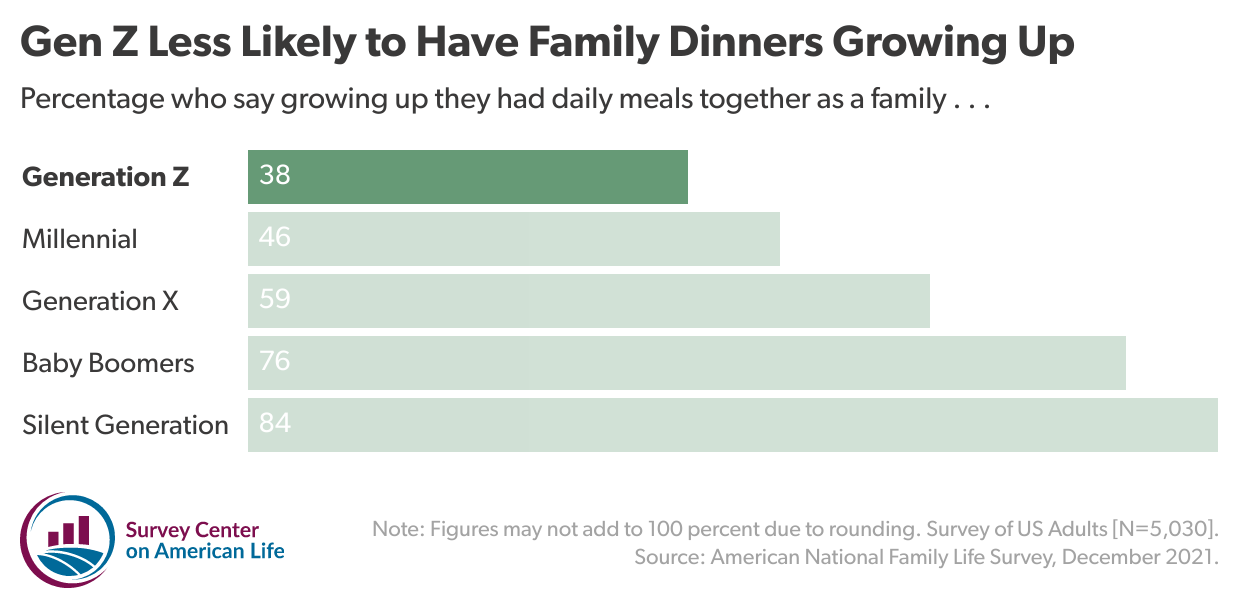Featured Data February 9, 2022
Few Gen Zers Grew Up Having Family Dinners

The family meal, once a regular part of American family life, has become a rarity. Americans who belong to Generation Z are far less likely to report having grown up sharing daily meals with their family than other Americans. Less than half of Gen Zers (38 percent) and Millennials (46 percent) say that their family had daily meals together, compared to more than three-quarters (76 percent) of Baby Boomers. The decline in family mealtime may come at a cost. Americans who grew up having regular family meals have been shown to have lower rates of depression and better relationships with their parents.








